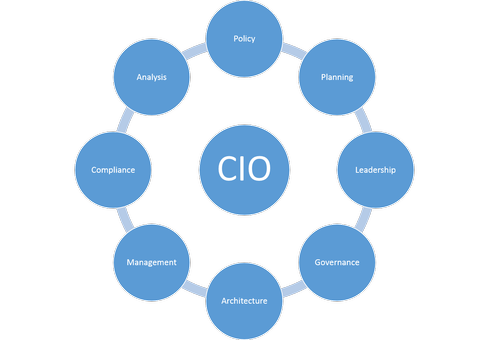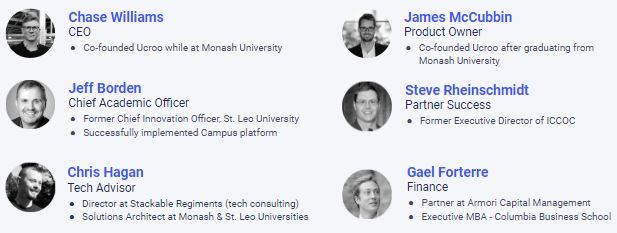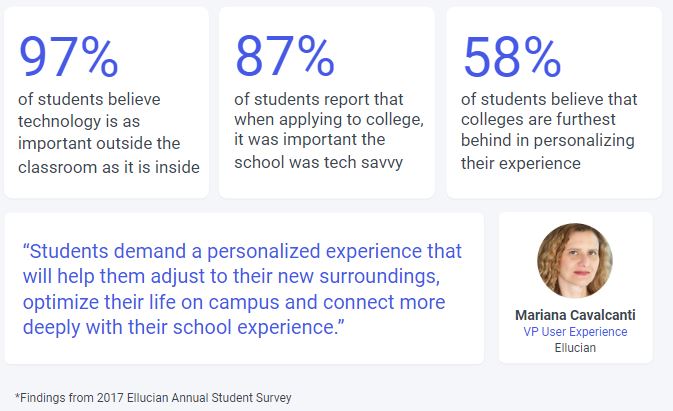As the head of I.T., you have been on the receiving end of, “over-promise / under-deliver” several times. You are likely in charge of a portfolio that you did not create, with other department leadership asking you to adopt their low (or no) integration technology choices into your legacy stack, which may not even handle integration well anyway. Mobile apps that don’t deep link to other apps, portals that have no meaningful way to build community, and academic technologies that sit in parallel to your infrastructure are just a few of the problems you manage daily.

That means your support challenges are immense as you try to work with help-desks(your own staff as well as third parties), support tickets for hardware, software, connectivity, classroom technology, and more, all the while trying to ensure stringent, higher education policies are met while keeping the infrastructure secure. Or perhaps you have had to deal with disaster. Education data is the third-most stolen data-set, after financial and health care. Yet many education technology companies email data back and forth or put clients on the same servers, provisioning “walls” that can lead to data bleeding or even garbled P.I.I. (which of course shines a spotlight on you and your team). All of this may have led to feeling more like you and your team are vendors, with the academic and student departments acting as customers, instead of partners. You get very little thanks, as every stakeholder in the room simply expects your services to act like the lights…turn the switch, and everything should work perfectly.
It’s hard to know how to prioritize any single issue over another as things like access cannot be valued any less than security, and privacy cannot be elevated above student success. Yet you have those conversations regularly depending on the Dean or President or Vice-President or Director you are speaking with. So you juggle all of these things, trying to please internal stakeholders while also being bombarded from external vendors yourself. We’re guessing you are tired and maybe even a touch cynical at this point. While some of you make it a point to listen to 2-3 new product demonstrations each week or month, many of you have completely walled off the outside world, taking a, “I’ll call you when I’m ready” approach. It’s completely understandable. We’ve been there.
Seriously. We’ve been there.
When I was the Chief Innovation Officer at Saint Leo University, I received dozens of cold calls each week. I got unwanted emails by the hundreds. I even got barraged via LinkedIn. As soon as I accepted a connect request, I immediately got hit up for a pitch or vendor demonstration. It’s a really hard line to walk, no? Generally speaking, higher education is not innovative from an education technology perspective. Universities typically don’t build new hardware or software. We learned long ago that to do so is a tremendous waste of resources. So, we are reliant on companies. But the adage about kissing a lot of frogs before you find a prince comes to mind. There are a ton of ed tech companies that are selling solely to make a buck or because they created something “awesome” that students just have to use. They may use a lot of the right jargon or buzzwords, but you can tell by their org charts that they are all technologists who are building and selling tech, mostly because tech is cool or lucrative. They often don’t have educators, academics, student services persons working for the company. So they use robo-calls, automated emails, and they give away drones or iPads at conferences just to get you to see how technology focused they are.
What Makes Campus any Different?

Why is Campus different? Because we DO have academics, education technologists, and student success workers on our team. We have over 70 years of academic administration experience sitting on our executive team, from our Technical Adviser who led IT at one of the largest Universities in Australia to our Partner Success Director who ran the Iowa Community College Online Consortia for a decade before moving to the Innovation department at a Private University to myself, former Chief Innovation Officer and 25 year faculty member who travels the globe helping Universities, Ministries of Education, Government officials, Community College Consortia, and more create better learning experiences. Why does that matter? Because we aren’t selling technology just to make a buck. Our profits do not define us, they sustain us. We aren’t selling ed tech because it’s cool. After all, technology for the sake of technology is a fool’s errand. No, we’re working with Campus because we have seen it solve problems…BIG problems. We know the power of integration (and how to work around systems which struggle to integrate). We understand that implementation, change management, and project plans are all keys to success, usage, and ultimately transformation. At the same time, we’ve seen real output as Campus has increased enrollments. We’ve used (and measured) Campus to help us help students be persistent and successful. We have helped schools implement Campus to drive alumni affinity, leading to everything from better career networks to donations.
The Portal Problem

While some have no central hub whatsoever, most schools have a weak, potentially detrimental portal. But without any meaningful ROI around that portal, you have no way to measure it’s efficacy or harmfulness. But you are likely still dissatisfied with the results. Portal experiences aren’t mobile enough, they aren’t functional enough, they don’t connect people to people, they struggle to integrate beyond basic SSO, they actually encourage departmental silos, and more. A few of you have built your own portal to try and overcome this, giving you the power and control you desire, but soon realizing that “homegrown” costs a ton of money and time, which ultimately will lead to a product that can’t modernize. Most of you are still using old, legacy, outdated, anything-but-user-friendly portals. Your people hate them. You hate them. But they integrate just enough functionality to be okay. (Students must use them to register or faculty must use them to submit grades or staff must go into them for Intranet access.) None of those things are smooth or clever or modern, but since there is no real way to measure their effectiveness or lack of usefulness, you leave them in place. After all, nobody wants to use their people’s time nor finite resources to implement a new set of lights. (Or do they?)
Light at the End of the Tunnel
We’re here to tell you, there is not only a better central tool that can (and should) include measurable ROI, but that implementation support from people who have been in the trenches can help make it work. The concept of a central hub or “front door” to a learning ecosystem is golden, digital real-estate. It’s got the potential to help connect everyone to everything, not just SSO links to other systems, but including pass-through notifications and more. We mean everything, including communities, support mechanisms, and even friendship. And with more and more research illustrating the power of non-academic connection to academic success, a portal is the perfect place to start changing experiences for students, faculty, and staff.

Some try to do this with highly functional, tile-based or lengthy URL lists, mixed with “free” social media tools. But savvy technologists know that a “nice to have” community tool sitting on the side, won’t get the job done. Not only do we have historical examples of R-1 Universities who spent more than $1M over 12 months on Facebook / LMS integrations, only to turn the whole thing off after only a few weeks; but you are left with unanswerable questions about privacy, security, and the way public influence can mingle with student business. It’s quite jarring. Like you, we look on as college alumni groups on Facebook get inexplicably connected to terrorist organizations, how experiences like the Momo game influence kids to take their own lives all propagated via social networking or as bullying takes place across mobile (only) apps. There are hundreds of examples of what happens in an environment you can’t monitor effectively, gather data for, setup to mirror a school’s organization, nor control messaging for.
But it does not have to end in disaster. Instead of losing out on the value of connecting students, staff, faculty, administrators, resources, and support systems, as well as ignoring a social experience altogether, you can have a walled garden – a concierge experience where you can access data, control messaging, and where you can receive alerts. You can have a system that alerts the right person at the right time about anything, from the rare semantic faux pas, to needed registration support, to finding an event. Even taking that a step further, imagine a system that can alert you to problems students are experiencing, in the moment they experience them. Imagine a system that not only connects people, but also notifies counselors when a student gets depressed, or worse. Imagine seeing the conversations that normally take place in the cafeteria or via back-channels. Imagine a private, secure, modern portal that engenders community and communication through integration, a full mobile experience, and via social tools students expect when they apply to college.
But you don’t have to imagine that. All of that exists. And if you follow the research from Apple (and others) who suggest that it takes 4 years for technology to transform any organization, the iterative, module based nature of the Campus platform, coupled with implementation plans from educators who have already implemented it, and you have something truly different. You have something students crave that also happens to help them succeed. You have a central hub, a front door to a learning ecosystem that helps staff and faculty with their work. You get new kinds of data your Provost, VPAA, or President will be thrilled with. And you get a partner, in the truest sense of the word.
We hope you’ll explore more. You may not request many commercial presentations each semester, but we think you’ll be glad you looked more closely at this one. See if we’re as different as we claim. See if this tool can do what you’ve read here. We aren’t trying to nudge you toward a ½ percentage increase in retention. Instead we’re swinging for the fences, trying to move the needle significantly. We don’t want you to have staff who are just satisfied. We want you to have staff who are delighted at the efficiency and capability of the platform. And as professional educators, we believe we have a way to make all of that happen (and more). We look forward to talking with you.